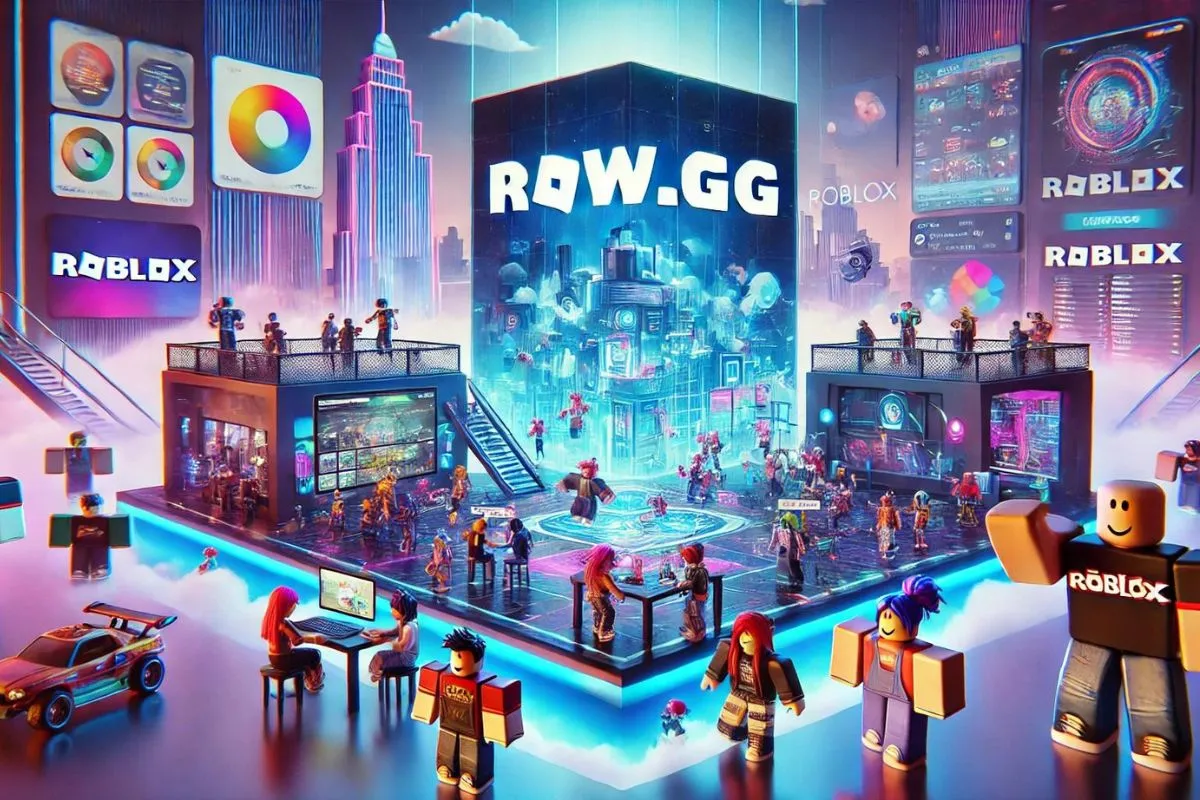Exploring The Future of Sports: How Tech EtrueSports Is Shaping Tomorrow’s Games
Introduction To Tech EtrueSports
Tech EtrueSports combines the exciting worlds of technology and sports, creating new experiences for players and fans. This field has grown fast, bringing tech innovations right to the heart of sports.
Overview of The Merging Fields of Technology and Sports
Technology in sports, known as Tech EtrueSports, is not just a trend; it’s a revolution. From smart gadgets that athletes wear to advanced computer programs that analyze sports performance, tech is making sports smarter and more exciting. Imagine shoes that track how fast you run or goggles that show a swimmer’s heart rate in real time. These are no longer ideas from science fiction; they are real and used today.
Brief History and Evolution of EtrueSports
Tech EtrueSports started with simple tools like stopwatches and has grown to include virtual reality and AI. In the early days, tech in sports was basic. But now, with the power of the internet and advancements in technology, things like AI can predict if a player risks an injury or virtual reality can help a golfer practice without being on a course. This evolution has changed how athletes train, how coaches make decisions, and how fans enjoy sports. Each step forward makes sports more engaging and helps everyone from amateur players to professional athletes improve their game.
This journey from simple tools to complex systems shows just how much potential there is in the merging of technology and sports. With every new technology introduced, from wearables to data analytics, EtrueSports continues to redefine the boundaries of what is possible in sports. This constant innovation ensures that the field of Tech EtrueSports will keep evolving, bringing new tools and possibilities to the world of athletics.
Revolutionizing Training with AI and VR
Tech EtrueSports is transforming how athletes train and improve, thanks to artificial intelligence (AI) and virtual reality (VR). These technologies are not just changing the game; they are redefining the preparation and skill development processes.
AI-driven Personalized Training and Performance Analytics
AI is at the forefront of personalized sports training. By analyzing data from athletes’ performances, AI creates training programs that are tailored to the strengths and weaknesses of each athlete. For instance, AI can analyze a runner’s speed and endurance from past races and tailor a training plan that focuses on improving weak areas while enhancing strong points. This customization helps athletes push their limits without the risk of injury.
Moreover, performance analytics powered by AI give real-time feedback. Coaches and athletes can see immediate results of their training adjustments, allowing them to make data-driven decisions quickly. This immediate feedback loop is crucial for optimizing performance and achieving the best outcomes in both practice and competition.
Virtual Reality Applications For Immersive Training Experiences
Virtual reality takes training to a new level by simulating real-world environments and conditions. Athletes can use VR to practice their skills in a variety of settings without leaving the training room. For example, a skier can experience downhill courses from all over the world, or a quarterback can practice plays against a virtual defense.
These VR training sessions are not just about physical training; they also enhance mental preparation. Athletes can experience high-pressure scenarios in a controlled environment, which helps them prepare for real competitions. This exposure is invaluable as it reduces anxiety and improves performance when it really counts.
Wearable Technology: Enhancing Athlete Performance
Wearable technology has become a cornerstone in modern sports, enhancing athlete performance through advanced data collection and analysis.
Types of Wearable Tech Used In Sports
In the realm of Tech EtrueSports, various wearable technologies are employed to monitor and boost athlete performance. These include:
- Fitness Trackers and Smartwatches: These devices track general health metrics such as heart rate, sleep quality, and calories burned. They are widely used by athletes of all levels to monitor their general fitness and daily activity.
- Performance Monitors: Devices specifically designed for athletic performance, such as GPS trackers for distance and speed, and accelerometers for movement analysis. These are crucial in sports like running, cycling, and team sports where speed and distance are key metrics.
- Smart Clothing: Incorporating sensors directly into the fabric of clothing, smart clothing can measure muscle activity, body temperature, and other physiological data more accurately. This technology is valuable in endurance sports and training scenarios where precise biomechanical data can provide insights into an athlete’s form and technique.
- Biometric Sensors: These specialized devices can measure more detailed data such as blood oxygen levels, electrocardiogram data, and even stress levels. This information is vital for high-performance athletes who need to monitor their body’s response to training intensively.
Benefits of Data Collection and Analysis For Performance Improvement
The data collected by wearable technology offers numerous benefits that significantly enhance athlete training and performance:
- Personalized Training Regimens: Data from wearables help coaches tailor training programs that fit the unique physiological profile of each athlete, optimizing their performance and reducing the risk of injury.
- Real-Time Feedback: Athletes and coaches can get immediate insights during training sessions, allowing them to make instant adjustments to training intensity or technique. This real-time feedback is invaluable for making quick gains in performance.
- Long-Term Health Monitoring: Wearables also monitor the long-term health and wellness of athletes, helping to track progress over time and identify potential health issues before they become serious. This aspect is particularly important in managing the training loads and recovery of elite athletes.
- Injury Prevention and Rehabilitation: By analyzing data trends, wearable technology can predict when an athlete is at risk of injury based on markers like muscle fatigue or recovery status. Similarly, during rehabilitation, wearables can ensure that an athlete does not exceed the safe limits of their recovery protocol.
Blockchain and NFTs In Fan Engagement
Blockchain technology and Non-Fungible Tokens (NFTs) are reshaping how fans interact with sports, enhancing engagement through secure transactions and exclusive collectibles.
Utilizing Blockchain For Secure, Transparent Fan Transactions
Blockchain technology is increasingly being adopted in the sports industry to manage transactions with enhanced security and transparency. Here’s how it benefits fan engagement:
- Secure Ticketing: Blockchain enables the issuance of digital tickets that are nearly impossible to counterfeit, ensuring that fans receive authentic tickets. Each transaction is recorded on a decentralized ledger, making the buying and selling of tickets transparent and secure.
- Merchandise Sales: Authentic sports merchandise can be bought and sold using blockchain technology, providing a trustworthy platform for fans to purchase official gear. The technology also helps combat counterfeit merchandise, a significant issue in the sports industry.
- Enhanced Betting Systems: Sports betting can also benefit from blockchain’s transparency and immutability. It ensures that bets are processed securely, and the outcomes cannot be tampered with, building trust among participants.
Non-Fungible Tokens (NFTs) as Collectibles for Fans
NFTs have introduced a new era of digital collectibles that can represent a wide range of unique fan-related content, from digital trading cards to video highlights of memorable sports moments. Here are the benefits they offer:
- Ownership and Exclusivity: Fans can own exclusive digital memorabilia that is verified for authenticity through blockchain. This could be anything from a virtual jersey to a moment captured from a game, each encoded into an NFT that provides verified ownership status to its holder.
- Interactivity and Engagement: NFTs can also offer interactive experiences, such as access to exclusive events or inputs on club decisions. For instance, token holders might get a chance to vote on minor decisions like the music to be played at a game, enhancing their engagement with the team.
- Investment Value: Like physical collectibles, NFTs can increase in value over time. Fans not only purchase a piece of sports history but also an asset that could potentially appreciate based on demand and rarity.
- Personalized Fan Experiences: Teams can issue NFTs that serve as a pass to unique experiences, such as meet-and-greets with athletes or virtual tours of sports facilities. This use of NFTs adds a new layer to fan loyalty programs, offering personalized experiences that are beyond traditional fan engagement.
Smart Stadiums and Enhanced Fan Experiences
Smart stadiums are transforming the way fans experience sporting events, integrating cutting-edge technology to make each visit unforgettable.
Innovations In Stadium Technology For Interactive Fan Experiences
Smart stadiums employ various innovative technologies that elevate the spectator experience:
- Wi-Fi and Connectivity: High-density Wi-Fi systems allow fans to stay connected throughout the game, enabling real-time sharing and access to digital content related to the event.
- Mobile Apps: Many stadiums have developed mobile apps that enhance the visitor experience. These apps can manage tickets, offer stadium maps, and even let fans order food and merchandise directly to their seats without missing any action.
- Interactive Displays and Digital Signage: These provide real-time information, replays, and promotions, engaging fans more deeply during events. Some stadiums have implemented touch-free interactive displays that respond to hand gestures or movements.
- Enhanced Security: Advanced security protocols using biometrics such as facial recognition ensure a safer environment, speeding up entry processes and reducing the likelihood of unauthorized access.
Role of AR and VR in Providing Immersive Viewing Experiences
Augmented reality (AR) and virtual reality (VR) are at the forefront of revolutionizing fan engagement in sports stadiums:
- Augmented Reality Apps: AR can overlay digital information onto the live view of the field. Fans can point their smartphones at players to see stats, historical data, and live performance metrics, enhancing their understanding and enjoyment of the game.
- Virtual Reality Experiences: VR can transport fans who can’t make it to the stadium into the heart of the action. Some sports teams offer VR headsets that allow fans to watch live games from various virtual locations, like the sidelines or even from a player’s perspective.
- Mixed Reality Experiences: Combining AR and VR, mixed reality offers even more engaging experiences. For example, fans might participate in virtual competitions during halftime or interact with virtual mascots roaming the stadium.
The Competitive Landscape of EtrueSports
The realm of EtrueSports is as competitive and dynamic as traditional sports, featuring major tournaments, structured leagues, and intricate team dynamics that draw in players and audiences worldwide.
Major Tournaments, Leagues, and The Structure of Competitive EtrueSports
EtrueSports encompasses a wide array of competitive platforms ranging from global tournaments to local leagues, each tailored to different levels and types of gameplay:
- Global Tournaments: High-profile events such as the League of Legends World Championship and The International for Dota 2 attract teams from all over the world. These tournaments not only feature large prize pools but also massive viewer engagement, making them the pinnacle of competitive EtrueSports.
- Professional Leagues: Similar to traditional sports, EtrueSports has professional leagues like the Overwatch League, which features city-based teams and regular season play culminating in playoffs and a final championship.
- Structured Competitions: Many EtrueSports competitions are highly structured, with tiered leagues and qualification events that ensure a competitive balance and a clear pathway for new talents to emerge and compete at higher levels.
Discussion on Team Dynamics and Strategic Gameplay
The success of teams in EtrueSports depends heavily on their internal dynamics and strategic gameplay:
- Team Composition: Just like in traditional sports, the composition of an EtrueSports team is crucial. Teams must carefully select players who not only have individual skills but also complement each other’s playing styles. Roles such as damage dealers, tanks, and support are common, each requiring different skills and strategic thinking.
- Coaching and Strategy: Behind every successful EtrueSports team is a strategic framework developed by coaches and analysts. These professionals help in preparing the team for matches by analyzing opponents, refining tactics, and ensuring that players are mentally and physically prepared.
- Communication and Adaptability: Effective communication is vital during matches. Players need to coordinate their actions and strategies in real-time to adapt to the dynamic environment of competitive play. Teams that can quickly adapt to their opponents’ strategies often have an edge in critical moments.
- Practice and Discipline: Regular and disciplined practice sessions are essential for EtrueSports athletes. These sessions are not just about honing individual skills but also about perfecting team strategies and understanding the finer nuances of the game mechanics.
EtrueSports as a Career Path
EtrueSports offers a diverse range of career opportunities that extend far beyond the role of the athlete, encompassing various technical and support positions that contribute to the industry’s growth and operations.
Career Opportunities within the Industry from Athlete to Technical Support
- Professional Athlete: Competing in EtrueSports at a professional level is the most visible career path. It requires not only exceptional gaming skills but also strategic thinking and continuous learning to stay competitive.
- Content Creation: Many EtrueSports professionals and enthusiasts create content on platforms like YouTube and Twitch. This can include game streaming, tutorial production, and event commentary, which can be lucrative with a substantial follower base.
- Coaching and Team Management: Behind every successful EtrueSports team is a robust support system including coaches, team managers, and strategists who help refine tactics and manage day-to-day operations.
- Technical Roles: Technical support roles are crucial in EtrueSports for ensuring smooth gameplay and event broadcasting. This includes network engineers, game developers, and IT support staff.
- Event Organization and Production: With EtrueSports events drawing large audiences, there’s a significant need for professionals skilled in event planning, production, logistics, and marketing.
Economic Impact Including Sponsorships, Endorsements, and Media Rights
- Sponsorships and Endorsements: EtrueSports athletes and events attract sponsorships from major brands, similar to traditional sports. These sponsorships provide significant funding and can include equipment manufacturers, lifestyle brands, and gaming companies.
- Media Rights: Broadcasting rights for major EtrueSports tournaments are highly valuable, with media companies and streaming platforms willing to pay millions to secure exclusive broadcasting rights due to the substantial viewer numbers these events attract.
- Merchandising: Official merchandise sales for EtrueSports teams and events also contribute to the industry’s economy. This includes apparel, accessories, and even digital goods like in-game items or skins.
Challenges and Ethical Considerations in EtrueSports
EtrueSports, like any rapidly growing industry, faces its share of technical challenges and ethical considerations. Addressing these effectively is crucial to ensure the integrity and long-term sustainability of competitive gaming.
Addressing Technical Challenges and Ethical Concerns In Competitive Gaming
- Technical Challenges: As EtrueSports relies heavily on digital platforms, maintaining robust and secure IT infrastructure is paramount. This includes dealing with issues such as latency in online games, hacking, and ensuring fair access to gaming resources. Ensuring the stability and fairness of the gaming environment is essential, as technical failures can lead to not only financial loss but also damage to professional integrity.
- Ethical Concerns: Competitive gaming must grapple with issues such as cheating, use of performance-enhancing software, and the manipulation of game outcomes. Establishing strict regulations and employing advanced monitoring technologies are steps towards mitigating these issues. Additionally, the mental health of players is a growing concern, with the industry needing to address the stress and burnout associated with professional gaming.
Promoting Inclusivity and Fair Play
- Inclusivity: EtrueSports has the potential to be more inclusive than traditional sports due to its less reliance on physical attributes. However, ensuring that it remains accessible to people from diverse backgrounds in terms of gender, geography, and socioeconomic status is ongoing. Efforts include providing scholarships, creating more inclusive game designs, and fostering community policies that promote diversity.
- Fair Play: Fair play is fundamental in maintaining the competitive integrity of EtrueSports. This involves not only enforcing rules against cheating but also developing transparent criteria for competitions, clear pathways for resolving disputes, and consistent regulations across different games and regions. Fair play also extends to the responsible conduct of sponsors and advertisers, ensuring that marketing practices do not exploit vulnerable audiences, especially younger players.
The Future of Tech EtrueSports
As technology continues to advance at a rapid pace, the future of Tech EtrueSports looks vibrant with numerous opportunities for growth and innovation. This sector is set to redefine not only competitive gaming but also how we engage with sports entertainment.
Predicted Technological Advancements and Their Impact
- Integration of AI and Machine Learning: Future developments in AI could revolutionize player training, game strategies, and fan experiences. AI systems will become more adept at analyzing vast amounts of data to provide real-time insights and predictive analytics, enhancing coaching decisions and personalized fan content.
- Advancements in VR and AR: Virtual and augmented reality technologies are expected to become more sophisticated, offering even more immersive and interactive experiences. This could include fully immersive VR that allows fans to experience games as if they are actually in the stadium or AR applications that provide a digital overlay of live sports events in real time.
- Wearable Tech Innovations: Wearables will likely advance to monitor more detailed physiological and biomechanical metrics, providing deeper insights into athlete performance and health. This could lead to more personalized training regimens and better injury prevention strategies.
- Blockchain for Fan Engagement and Monetization: As blockchain technology matures, its application in securing ticketing, merchandise sales, and digital collectibles like NFTs will become more widespread, providing a more secure and seamless experience for fans.
Emerging Trends and Potential Industry Directions
- Esports in the Olympics: There is ongoing discussion about including esports as a part of the Olympic Games, which would significantly elevate the profile and legitimacy of EtrueSports globally.
- Growth of Smart Stadiums: As smart technologies evolve, more stadiums are expected to become ‘smart’, with IoT devices enhancing the fan experience through personalized services and engagement opportunities.
- Sustainability Practices: The EtrueSports industry may increasingly adopt sustainable practices, particularly in virtual event hosting and digital merchandise, reducing the environmental impact associated with traditional sports.
- Diversification of Content: The boundaries between traditional sports, esports, and entertainment are blurring. Future trends may see a greater crossover with other entertainment forms, potentially integrating interactive game elements into live sports broadcasts.
Conclusion
Tech EtrueSports is rapidly changing the landscape of sports and gaming by integrating cutting-edge technologies such as AI, VR, AR, and blockchain. These innovations are not only revolutionizing athlete training and performance analysis but also transforming fan engagement with immersive experiences and secure, transparent transactions. The industry’s competitive nature, coupled with its economic potential through sponsorships, media rights, and digital collectibles, continues to drive its growth and impact globally.
Looking forward, the future of Tech EtrueSports is bright with advancements in smart stadiums, sustainable practices, and even the potential inclusion of esports in major sporting events like the Olympics. As the boundaries between sports, gaming, and entertainment continue to blur, Tech EtrueSports is positioned to lead the next wave of innovation, creating a more engaging and interactive world for athletes, fans, and professionals alike.
FAQs
What is Tech EtrueSports?
Tech EtrueSports refers to the integration of advanced technologies like AI, VR, AR, and blockchain into sports, enhancing both athlete performance and fan engagement through innovative tools and platforms.
How does AI influence athlete training in EtrueSports?
AI analyzes performance data to create personalized training programs, provide real-time feedback, and predict potential injuries, helping athletes optimize their training and performance safely and effectively.
What role does virtual reality play in Tech EtrueSports?
VR offers immersive training experiences for athletes, allowing them to simulate real-world scenarios and practice in virtual environments that replicate actual competition settings without the physical and logistical constraints.
How are fans benefiting from blockchain in EtrueSports?
Blockchain technology enhances fan engagement by securing transactions for tickets and merchandise, and by creating and managing digital collectibles like NFTs, which offer fans unique memorabilia and interactive experiences.
What are smart stadiums and how do they improve fan experiences?
Smart stadiums utilize IoT technology to enhance the fan experience through mobile connectivity, interactive displays, and personalized content delivery, ensuring fans have a seamless and enriched game-day experience.
Can EtrueSports careers extend beyond being an athlete?
Yes, careers in EtrueSports include a variety of roles such as game developers, coaches, content creators, event organizers, and technical support staff, reflecting the diverse needs and expansive growth of the industry.
What ethical considerations are important in EtrueSports?
Ethical considerations in EtrueSports involve addressing fair play, inclusivity, and the mental health of participants. Ensuring fair competition, promoting diversity, and providing support for athletes’ wellbeing are crucial for the integrity of the sport.














Post Comment